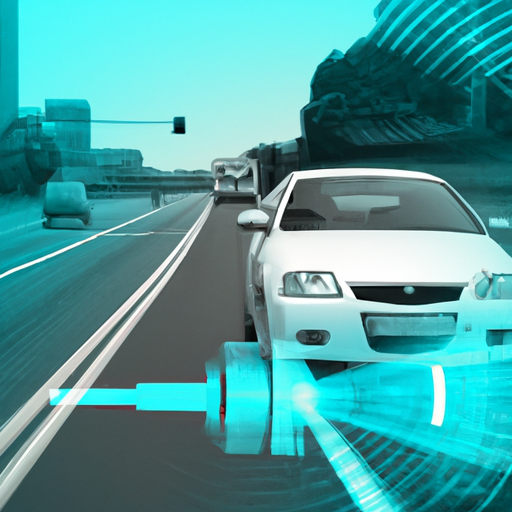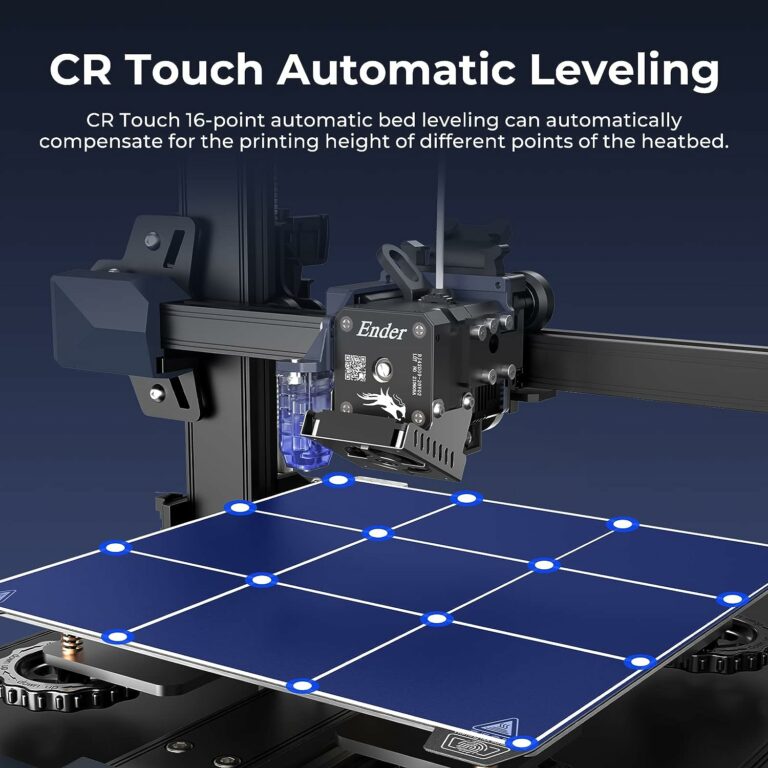Have you ever wondered about the safety and reliability of self-driving cars? With the rapid advancements in technology, autonomous vehicles are becoming a hot topic of discussion. From Tesla’s autopilot feature to Google’s Waymo, self-driving cars are revolutionizing the way we travel. But are they truly safe and reliable? In this article, we will explore the technology behind self-driving cars and uncover the truth about their safety and reliability. Get ready to embark on a fascinating journey into the world of autonomous vehicles.
Overview of Self-Driving Cars
Definition of self-driving cars
Self-driving cars, also known as autonomous cars or driverless cars, are vehicles capable of driving themselves without the need for human intervention. These vehicles use a combination of advanced technologies such as artificial intelligence, machine learning, computer vision, and sensor technologies to navigate and operate on the roads.
Brief history and development of self-driving cars
The concept of self-driving cars dates back to the 1920s, with the invention of the first mechanical driverless car. However, it was not until the late 20th century that significant advancements were made in the development of self-driving technology. The DARPA Grand Challenges held in the early 2000s propelled the development of self-driving cars, with participants competing to create autonomous vehicles capable of completing challenging driving tasks.
Over the years, major automotive and technology companies have invested heavily in self-driving car research and development. Companies like Google’s Waymo, Tesla, Uber, and traditional automakers such as Ford and General Motors have made significant strides in bringing self-driving cars closer to reality.
Importance and benefits of self-driving cars
Self-driving cars hold great importance and offer numerous benefits to society. One of the key advantages is the potential to significantly reduce road accidents and fatalities. Human error is the leading cause of road accidents, and by eliminating human drivers, self-driving cars have the potential to enhance road safety.
In addition to improving road safety, self-driving cars can also lead to increased efficiency and reduced traffic congestion. These vehicles can communicate with each other, offering real-time information and optimizing traffic flow. This can result in shorter travel times and less time wasted in traffic jams.
Self-driving cars also have the potential to transform transportation for individuals with disabilities or limited mobility. These vehicles can offer increased accessibility and independence to those who may otherwise struggle with traditional transportation options.
Key Technologies Used in Self-Driving Cars
Artificial Intelligence (AI)
Artificial intelligence plays a crucial role in self-driving cars. AI algorithms process vast amounts of data to make decisions and control the vehicle’s movements. These algorithms use complex machine learning models that can recognize and understand the environment, detect obstacles, make decisions, and take appropriate actions.
Machine Learning (ML)
Machine learning is a subset of artificial intelligence that enables self-driving cars to improve their performance over time. Through continuous exposure to various driving scenarios, the machine learning models incorporated in these vehicles can adapt and learn from past experiences, enhancing their ability to make accurate predictions and respond appropriately.
Computer Vision
Computer vision is another critical technology in self-driving cars. Using cameras and image recognition algorithms, self-driving cars can perceive and understand the surrounding environment. Computer vision enables autonomous vehicles to identify objects, pedestrians, traffic signs, and other vehicles, allowing them to make informed decisions about their movements.
Sensor Technologies
Self-driving cars rely on a range of sensors, including radar, LiDAR (Light Detection and Ranging), and ultrasonic sensors. These sensors gather data about the vehicle’s surroundings, measuring distances, velocities, and detecting obstacles. By combining information from different sensors, self-driving cars can build a comprehensive understanding of the environment and make accurate decisions.
GPS and Mapping Systems
GPS (Global Positioning System) and mapping systems are essential for self-driving cars to navigate and accurately determine their location. These systems provide real-time location data, ensuring the vehicle stays on the correct route and avoids potential obstacles. Detailed and up-to-date maps, combined with GPS technology, allow self-driving cars to plan their trajectories and make informed decisions about turns, lane changes, and intersections.
Safety Measures in Self-Driving Cars
Sensor redundancy and fail-safe systems
Safety is a top priority in self-driving cars, and various measures are in place to ensure the robustness of the autonomous systems. Sensor redundancy refers to the use of multiple sensors of the same type to provide backup in case of failure. Fail-safe systems are designed to detect faults or malfunctions in real-time and take appropriate actions to avoid accidents or mitigate risks.
Collision avoidance algorithms
Self-driving cars utilize advanced collision avoidance algorithms to identify potential collision risks and take proactive measures to avoid accidents. These algorithms analyze real-time sensor data, predict the likelihood of a collision, and autonomously make adjustments to the car’s speed, acceleration, and trajectory to prevent accidents.
Emergency braking systems
Self-driving cars are equipped with emergency braking systems that can autonomously apply the brakes in critical situations. These systems utilize sensor data to detect imminent collisions and can react faster than human drivers, potentially reducing the severity of accidents or even preventing them altogether.
Vehicle-to-vehicle (V2V) communication
V2V communication enables self-driving cars to exchange information with other vehicles on the road. By continuously sharing data such as speed, position, and intentions, self-driving cars can anticipate and coordinate their actions, minimizing the risk of collisions and improving overall road safety.
Challenges and Limitations of Self-Driving Cars
Weather conditions and environmental factors
One of the key challenges for self-driving cars is navigating through adverse weather conditions. Rain, snow, fog, or extreme sunlight can affect the performance of sensors and limit the vehicle’s ability to perceive the environment accurately. Furthermore, environmental factors like poorly marked roads or construction zones can pose additional challenges for self-driving cars.
Complex urban driving scenarios
Navigating through complex urban driving scenarios, such as crowded intersections, pedestrian-heavy areas, and unpredictable driving behaviors, can be challenging for self-driving cars. These scenarios require sophisticated algorithms and robust sensor technologies to ensure safe and efficient navigation.
Legal and regulatory challenges
As self-driving cars continue to evolve, legal and regulatory frameworks need to be adapted to address the unique challenges and requirements of autonomous vehicles. Issues such as liability in accidents involving self-driving cars, data privacy, and cybersecurity need to be addressed before widespread adoption can occur.
Ethical considerations
Self-driving cars raise ethical considerations when faced with unavoidable accidents or collisions. These vehicles need to be programmed with decision-making algorithms that prioritize the safety of occupants and pedestrians. However, determining the morally correct course of action in situations with no optimal outcome poses a significant challenge.
Reliability and Performance of Self-Driving Cars
Testing and validation processes
Self-driving car manufacturers employ rigorous testing and validation processes to ensure the reliability and performance of their vehicles. These processes involve extensive real-world testing, as well as simulations that recreate various driving scenarios and edge cases. Through testing, manufacturers can identify and address potential issues before deploying their vehicles on public roads.
Real-world performance vs simulated environments
While simulations play a crucial role in testing, it is essential to validate self-driving car performance in real-world environments. Real-world conditions can present unpredictable situations that may not be fully captured in simulations. Manufacturers continuously work to bridge the gap between simulated and real-world performance to enhance the reliability and safety of self-driving cars.
Accuracy and reliability of mapping systems
Mapping systems are foundational to self-driving cars, providing critical information about the environment and road conditions. To ensure accuracy and reliability, mapping systems require constant updates and verification. Manufacturers work closely with mapping providers to maintain accurate and up-to-date maps, minimizing the risk of navigational errors and improving overall performance.
Case Studies: Self-Driving Car Accidents
Overview of major self-driving car accidents
Despite the robust safety measures in place, self-driving cars have been involved in a few notable accidents. The most notable one occurred in 2018 when an Uber self-driving car struck and killed a pedestrian in Arizona. This accident raised concerns about the readiness of self-driving technology and prompted further investigation into improving safety and avoiding future accidents.
Investigation and analysis of accidents
Whenever a self-driving car accident occurs, a thorough investigation and analysis are conducted to identify the cause and any system failures that may have contributed to the accident. These investigations involve collaboration between the vehicle manufacturer, regulatory bodies, and independent safety organizations. The data and insights gained from these investigations help improve the safety and reliability of self-driving cars.
Lessons learned and improvements made
Accidents involving self-driving cars have offered valuable lessons to the industry. Each incident prompts manufacturers to reevaluate their technology, improve safety measures, and strengthen the performance of autonomous systems. These incidents serve as learning opportunities, allowing the industry to continuously evolve and make advancements toward safer and more reliable self-driving cars.
Government Regulations and Safety Standards
Current regulations on self-driving cars
Government regulations on self-driving cars vary across different countries and regions. Some countries have implemented comprehensive regulations that outline the testing, deployment, and safety requirements for autonomous vehicles. However, there is still a need for standardized regulations to ensure consistent safety standards and facilitate the widespread adoption of self-driving cars.
National Highway Traffic Safety Administration (NHTSA) guidelines
In the United States, the National Highway Traffic Safety Administration (NHTSA) has released guidelines to address the development and deployment of self-driving cars. These guidelines provide recommendations to manufacturers, developers, and other stakeholders to ensure the safe testing and operation of autonomous vehicles on public roads.
ISO safety standards for autonomous vehicles
The International Organization for Standardization (ISO) is developing safety standards specifically for autonomous vehicles. These standards aim to establish a globally recognized framework that guides the development, testing, and operation of self-driving cars. Standardization efforts like these are essential for building trust in self-driving technology and ensuring consistent safety across different regions.
Public Perception and Acceptance of Self-Driving Cars
Consumer concerns and fears
The public’s perception of self-driving cars is crucial for their widespread acceptance and adoption. Many people harbor concerns and fears related to the safety and reliability of autonomous vehicles. Issues such as hacking vulnerabilities, system failures, and privacy breaches can cause apprehension among potential users. It is crucial for manufacturers and regulatory bodies to address these concerns and build trust among consumers.
Education and awareness campaigns
Education and awareness campaigns play a significant role in increasing public understanding and acceptance of self-driving cars. By providing accurate information about the technology, safety measures, and benefits of autonomous vehicles, these campaigns help dispel misconceptions and build positive perceptions. Engaging with the public through community outreach programs and demonstrations can also help address concerns and foster acceptance.
Public survey and opinion polls
Public surveys and opinion polls provide valuable insights into the perception and acceptance of self-driving cars. These surveys gauge public sentiment, identify concerns, and help manufacturers and policymakers understand the areas that need further improvement. By incorporating public feedback into the development and regulatory processes, stakeholders can work towards building self-driving cars that meet public expectations and address their concerns.
Future of Self-Driving Cars
Advancements in technology and AI
The future of self-driving cars holds even more advanced technologies and improvements in artificial intelligence. As AI algorithms continue to evolve, self-driving cars will become smarter, more capable, and better equipped to handle complex driving scenarios. Continued research and development in the field of AI will drive the next generation of self-driving technology.
Integration with smart cities and infrastructure
The integration of self-driving cars with smart cities and infrastructure is another exciting aspect of the future of autonomous vehicles. By connecting self-driving cars with intelligent transportation systems and the Internet of Things, vehicles can communicate with traffic signals, road sensors, and other smart devices to optimize traffic flow, reduce congestion, and improve overall efficiency.
Potential impact on transportation and society
The widespread adoption of self-driving cars has the potential to revolutionize transportation and society as a whole. With increased safety and efficiency on the roads, self-driving cars can transform mobility and accessibility, particularly for individuals with limited mobility, the elderly, and those living in rural areas. It can also lead to significant reductions in fuel consumption and greenhouse gas emissions, contributing to a more sustainable future.
Conclusion
Self-driving cars represent a significant advancement in automotive technology, with the potential to revolutionize transportation, improve road safety, and increase accessibility. Through the use of artificial intelligence, machine learning, computer vision, and sensor technologies, self-driving cars can navigate roads, make informed decisions, and interact with their surroundings. Despite the challenges and limitations that exist, continuous advancements, rigorous testing, and collaborations with regulatory bodies ensure the safety and reliability of these vehicles. As public perception and acceptance grow, the future of self-driving cars looks promising, paving the way for a transformative era of transportation.



